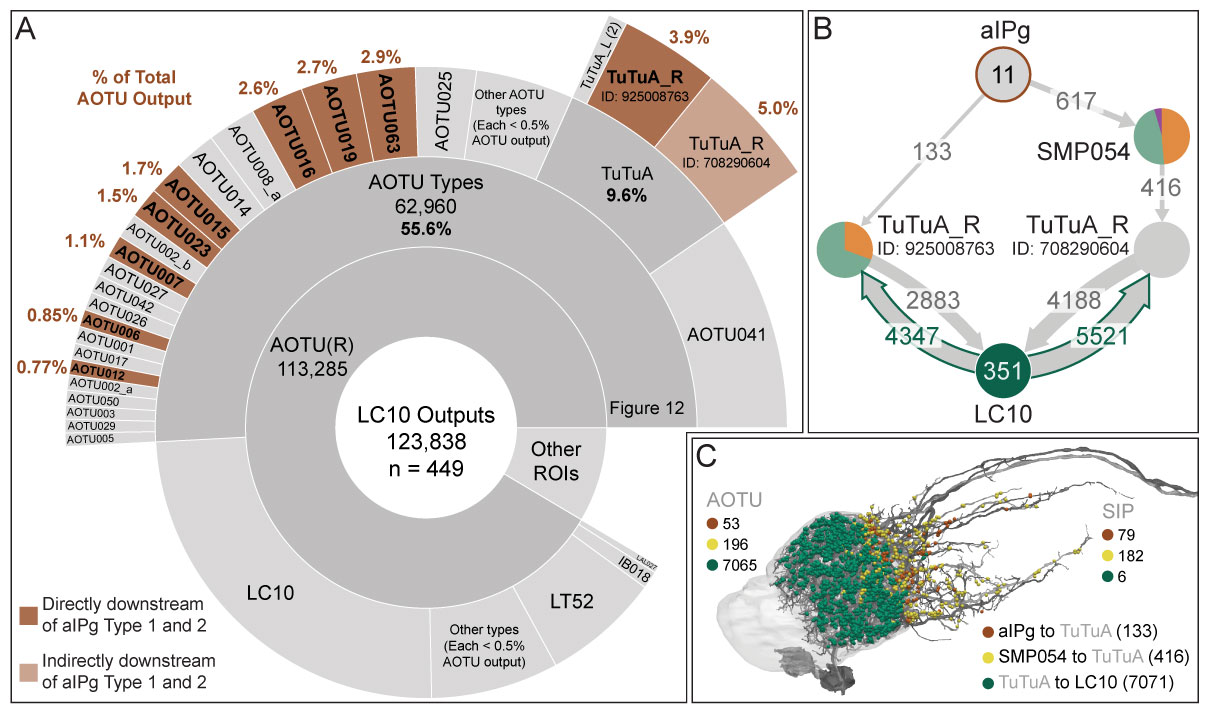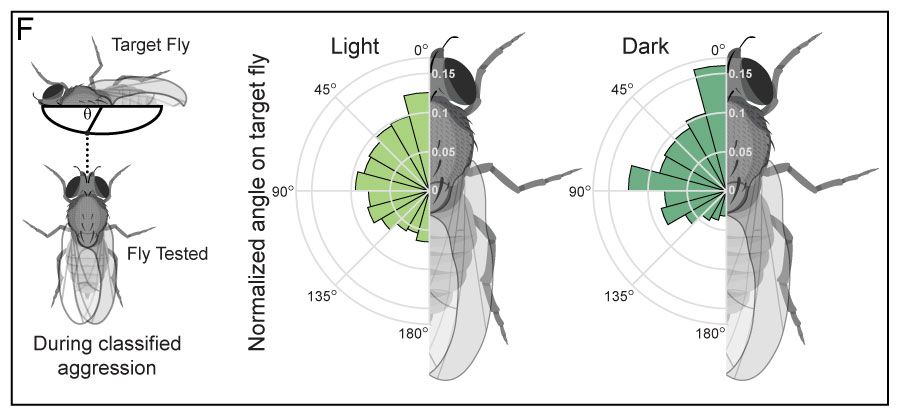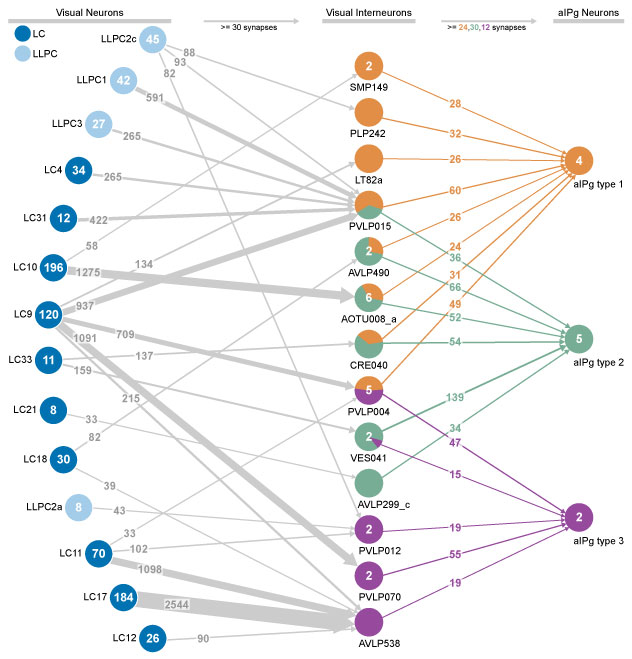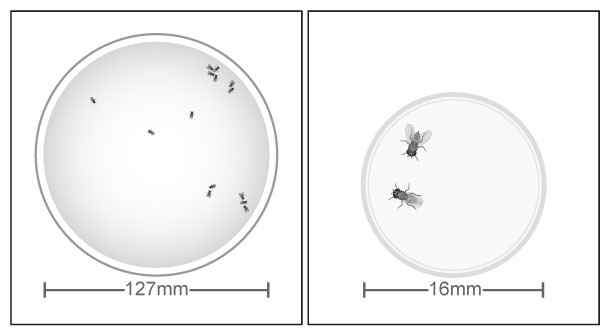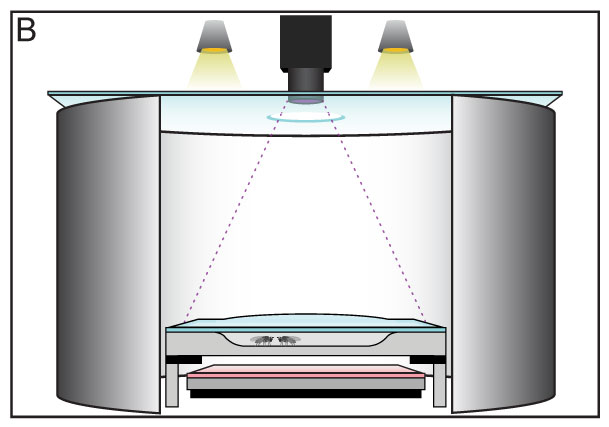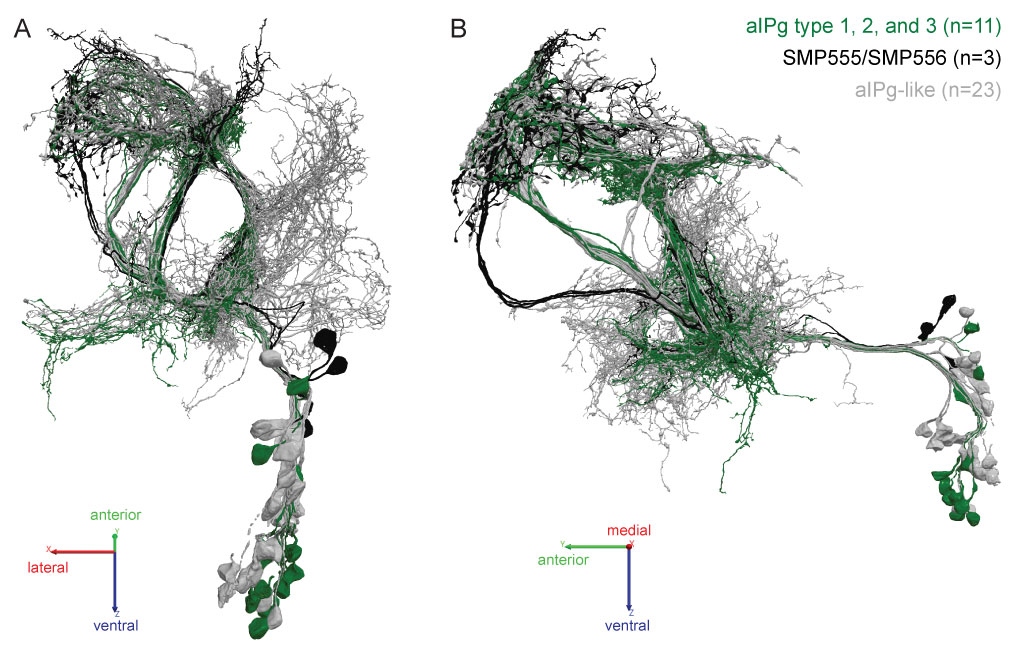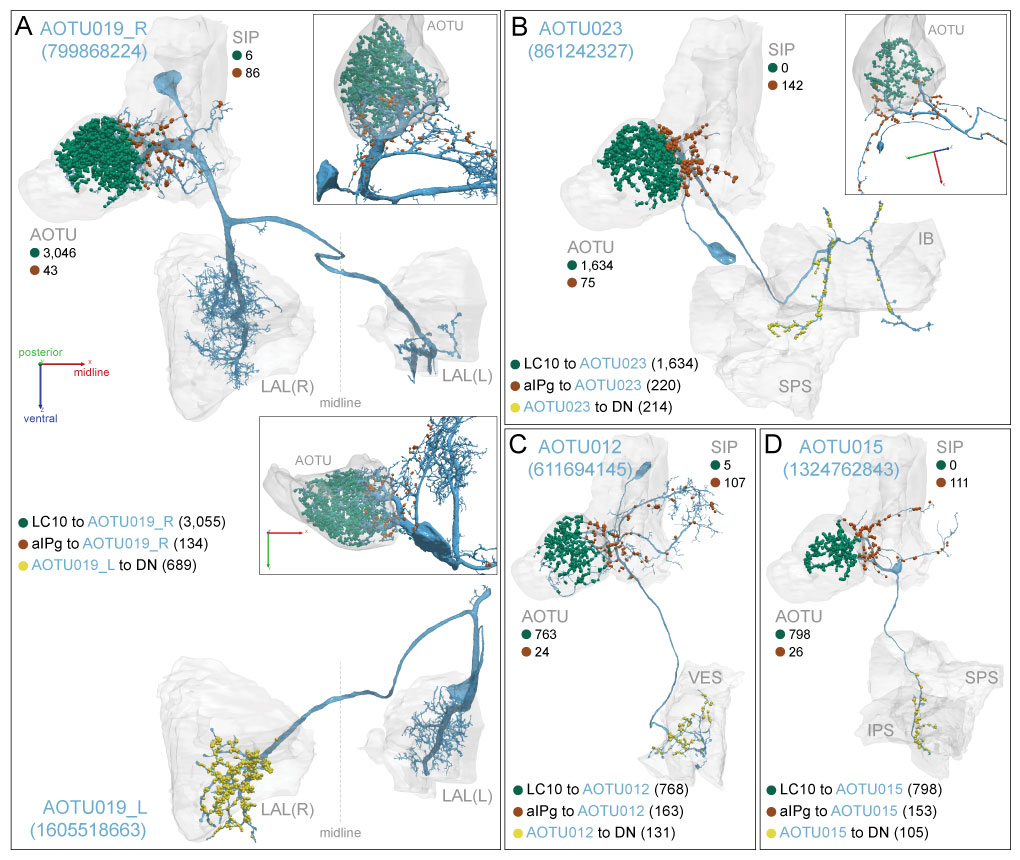Cell types and neuronal circuitry underlying female aggression in Drosophila
Catherine E. Schretter et al.
eLife. November 2020
CLIENT
Rubin Lab, HHMI Janelia
TOOLS
Adobe Illustrator, Adobe Premiere Pro, neuPrint, neuTu, neuVid, Blender, Cytoscape
LINK
DATA
Hemibrain connectome (Scheffer et al. 2020)
Contributions
- Assisted with formal analysis of circuits underlying female aggression in Drosophila
- Wrote custom Cypher and Python scripts to query hemibrain connectome data
- Made animations and images to show neuron morphologies, synapse locations, and brain regions
- Created Drosophila graphics to better illustrate data and behavioral analysis
- Drew a schematic of the arena used during activation experiments
- Created network diagrams and charts to display connectivity data
- Assisted with layout and color design on connectome figures
Paper Summary
Fruit flies, Drosophila Melanogaster, exhibit aggressive social interactions when competing for limited resources. These behaviors are regulated by sensory cues from the surrounding environment as well as the organism’s internal state. Using activation experiments with behavioral analyses and the hemibrain connectome, this paper describes a set of connected neurons that drive female aggression in adult Drosophila.

